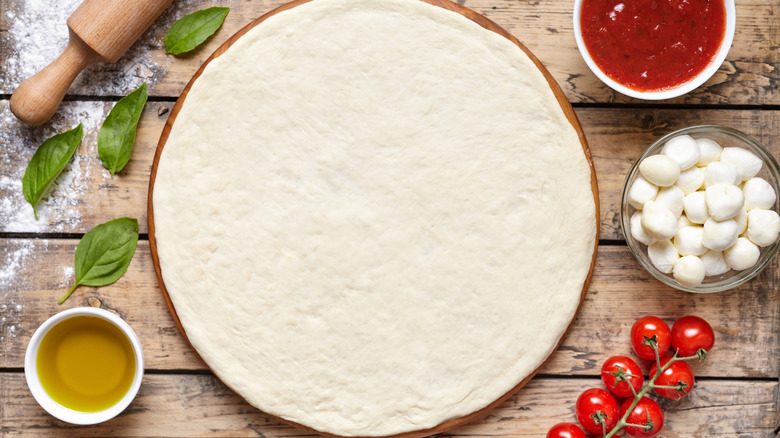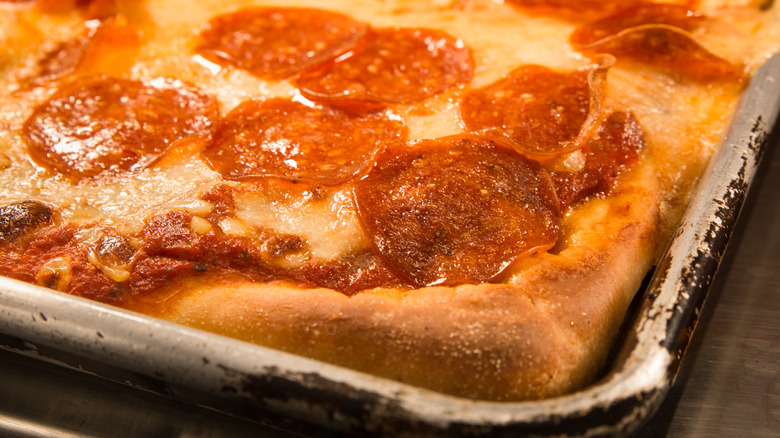The Best Type Of Pizza Dough For Beginners To Master
Making homemade pizza dough may sound intimidating and even unnecessary. After all, premade dough is easy and ready to go. Yet while the store-bought stuff offers a quick solution for your next pizza night, homemade dough can be easy.
In fact, depending on the style of pizza crust you choose, the extra effort may not be so strenuous. Sure, mastering yeast ratios and kneading techniques is daunting, especially because homemade pizza crust calls for all kinds of tips and tricks. Bob's Red Mill highlights properly kneading, resting, and stretching your dough as three key components to a successful pizza crust. In general, it's also best to avoid rolling out your dough with a rolling pin.
Yet because pizza doughs range in style, it's easy to find one that suits your expertise — or even lack thereof. Different iterations of pizza dough come with their own rule books, rising times, and flour recommendations. King Arthur Baking, for example, simplifies the process with all-purpose flour, whereas Food Network suggests bread flour, which yields a crispy — rather than chewy — crust.
Clearly, there's ample opportunity for variation, though one particular style is easier to throw together than the others. This is a dough that pays homage to pizza's Italian heritage — and a region further south than Naples.
Sicily does it best
Sicilian pizza dough is as simple as homemade dough can be, says J. Kenji López-Alt via Serious Eats. The Sicilian version of pizza dough has a distinctive texture and orientation; a spongy, focaccia-like crust, crispy bottom, and rectangular shape characterize the Sicilian style (per King Arthur Baking).
While this dough looks intricate — and certainly tastes flavorful — it's surprisingly easy to throw together. López-Alt declared Sicilian pizza one of the most forgiving dough variations. This ease is thanks in no small part to the dough's relatively quick timeline; the crust's flavor develops without the need for a slow-paced fermentation process. As such, you can whip it up and eat it within mere hours. So long, days-long resting and rising periods.
Likewise, Sicilian crust forgoes intensive kneading and rolling, thanks to its water content. López-Alt simply mixes dough in a stand mixer before adding it directly onto a baking sheet. Rather than stretch the dough out himself, he lets it stretch out on its own and gently spreads it before it goes in the oven. With such an easy and quick method, Sicilian pizza dough may draw inspiration from Italy's largest island, but this is one crust that doesn't operate on island time.

